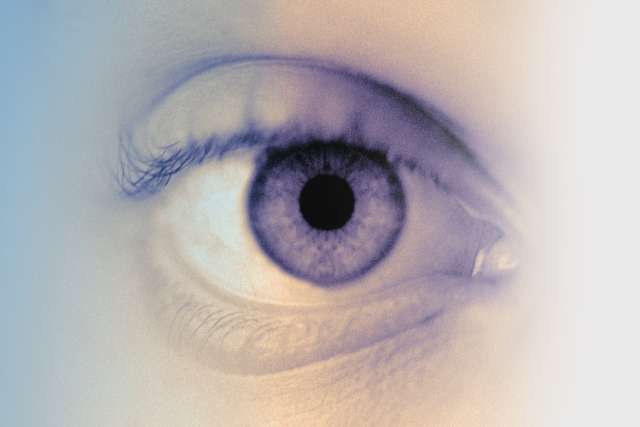Dry Eye
Our ophthalmologists and optometrists offer specialized testing and treatment for patients with dry eye. We tailor all therapies to your individual needs.

UCLA Health excellence in dry eye treatment
The specialists in the Dry Eye Center provide advanced care for patients with dry eyes. If you have symptoms of dry eye, seek treatment early. Our ophthalmologists and optometrists can help reduce symptom severity and improve your quality of life.
Highlights of our program include:
Tailored treatment: Our specialists spend time with each patient to understand their needs before creating a treatment plan. We tailor each care plan to your needs, preferences and goals.
Comprehensive testing: We complete an in-depth assessment to make an accurate diagnosis, including detailed imaging, tear samples and surface dyes. Comprehensive testing helps us formulate effective treatment plans.
Research-driven care: As part of an academic center, our specialists continually study new tools and treatments. This research focus allows us to offer our patients evidence-based treatment options. Some patients may be eligible to participate in clinical trials.
Conditions we treat
Dry eye is a condition in which the eyes don’t stay lubricated. Your eyes may not produce enough tears, or they may produce poor-quality tears. In dry eye syndrome, your eyes may sting, burn or feel scratchy.
Ocular surface disease
Ocular surface disease includes dry eye and several other conditions that affect the cornea, including:
Exposure keratopathy: Damage to the outer layer of eye tissue (cornea) typically caused by eyelids not closing all the way
Keratoconjunctivitis sicca: Dry eye that occurs when tears aren't able to provide adequate moisture
Malformations of the eyelid: Any condition that causes eyelid irregularity, including drooping, colobomas (a condition that causes a black notch in your pupil) or lid retraction
Meibomian gland dysfunction: A condition in which the oil glands that line the eyelids (meibomian glands) don’t produce enough oil to keep tears from evaporating
Neurotrophic keratitis: A degenerative corneal disease in which the nerves that carry signals to the cornea don’t function properly and create a dry surface
Dry eye-related conditions
Our specialists treat patients who have conditions that cause dry eye. We partner with your referring or primary care provider to comprehensively treat conditions such as:
Graft versus host disease: A complication of a bone marrow or stem cell transplant in which the donor cells attack the recipient’s body
Sjogren’s syndrome: An immune system disorder characterized by dry eye and dry mouth
Steven-Johnson syndrome: A rare disorder that affects the skin and mucous membranes, causing a severe and potentially life-threatening skin reaction
Tests and treatments we offer
When you come to the UCLA Health Dry Eye Center, you will receive a full diagnostic workup. You’ll need to avoid using eye drops for at least two hours before your appointment and refrain from wearing eye makeup. During testing, we may:
- Take high-resolution pictures of your lacrimal (tear) glands and meibomian glands that secrete oil
- Measure tear volume and breakup time, how long it takes tears to evaporate after you blink
- Evaluate tear film for osmolarity, the amount of salt in your tears
- Look for areas of damage on your eye’s surface that could lead to excessive dryness or poor tear flow
- Check for high levels of MMP-9, a protein in the lower eyelid lining that indicates inflammation, a common dry eye symptom
Depending on your test results, your treatment plan may include:
Fluid-filled contact lenses: Wearing lenses with fluid-filled chambers increases lubrication in the eyes and reduces dry eye symptoms.
Medicated eye drops: Prescription eye drops can lower inflammation that leads to dry eye and increase lubrication.
Autologous serum tears: The doctor takes a sample of the patient’s blood and spins it to separate a blood component called blood serum. Then they dilute it with sterile saline to create eye drops. These drops are a tear replacement that helps heal the outer layer of cells in the eye.
Meibomian gland expression: The doctor applies gentle pressure to the eyelids to release oil buildup in the meibomian glands, the oil glands that run along the edges of the eyelids.
BlephEx®: This in-office treatment uses a small device to carefully and gently remove debris from the edge of the eyelids.
Intense pulsed light (IPL): This in-office treatment uses light therapy to reduce eye inflammation.
LipiFlow®: This in-office treatment uses gentle heat to remove blockages in clogged oil glands.
TearCare®: This in-office treatment uses gentle heat to release oil buildup in the meibomian glands.
Meet our team
Our eye doctors are experts in diagnosing and treating dry eye and related conditions. We use sophisticated tools to make an accurate diagnosis, and we offer an array of treatment options.
Contact us
Call to request an appointment with a dry eye specialist at UCLA Health.
Find your care
To learn more about the Dry Eye Center and the treatments we offer, call .
